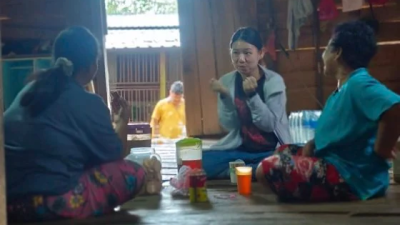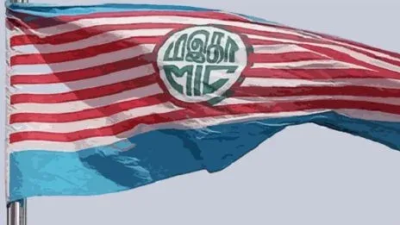By Michael Mathes
FULGHAM, Dec 16 (AFP) — Kentuckian Sam Stone pondered the rickety remnants of his modest rural home Wednesday, and while he expressed gratitude to be alive after a monster tornado, recovery has been a test of self-reliance — with no official assistance five days on.
His roof was torn off, walls blown out, and belongings mostly sucked away by the deadliest storm in Kentucky history, leaving him reeling and unsure of the next steps for him and his teenage son.
“I don’t have much money, and I don’t have any insurance, so I could use some help,” Stone told AFP as his Labrador pit bull mix Homer — who was whisked two miles (3.2 kilometers) away by the twister but delighted everyone when he was found alive by a friend — welcomed visitors.
“Individuals in the community have been helping,” the 55-year-old mechanic said. “But I ain’t seen nobody from the government.”
As US President Joe Biden visits tornado-ravaged Kentucky cities and towns pledging the government would foot 100 percent of the bill for emergency relief for the next 30 days, the flow of aid has lagged behind in some more remote pockets of the state.
National attention has focused on the two communities the president visited Wednesday: the virtually demolished city of Mayfield and the devastated town of Dawson Springs.
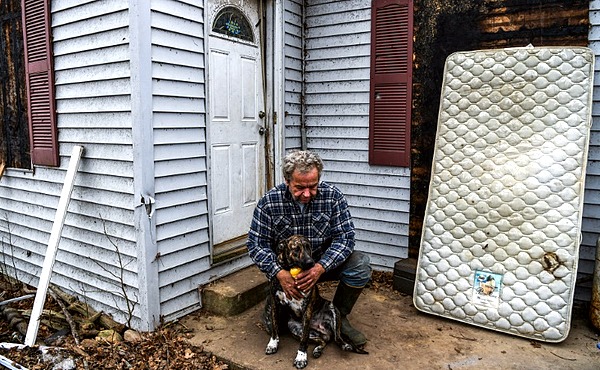
Amish family killed
But the destruction that raked across six states has triggered lesser-known tragedies too, in several instances out of the reach of a huge rescue and recovery operation.
Four members of one family among the Amish, a traditionalist Christian group that separates itself from much of the modern world, died when their home in the small community of Baltimore, Kentucky was ripped apart in the tornado.
An Amish elder who lost his daughter in the tragedy confirmed to AFP in Baltimore that a mother and father and two children perished.
In nearby Cayce, population 119, most buildings appeared to be damaged or destroyed. And while the community was partially isolated for four days after the storm, a federal emergency team finally arrived Wednesday, as did volunteers and a flood of donations.
Not everywhere has been as fortunate.
“All the way from here to (Cayce), there’s individuals just like me” who have yet to be checked on or helped by authorities, Stone said.
His elderly neighbor holed up in his trailer when the tornado hit, obliterating the structure and heaving the man 100 yards (meters) into a field across the road, Stone said.
The man suffered a punctured lung, six broken ribs and a broken leg. But when an ambulance came by and Stone stopped it for help, the crew said it was destined to treat victims in Mayfield, leaving a sour taste in Stone’s mouth.
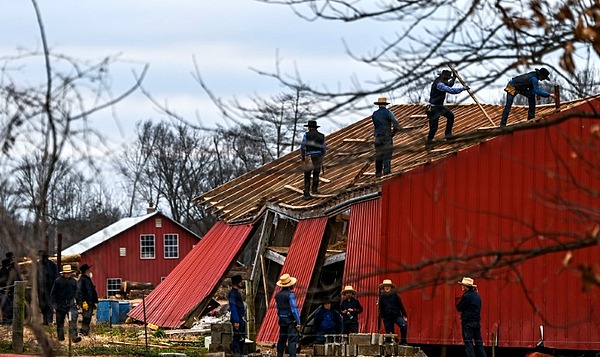
‘Overlooked’
A few miles up the road, Dylan Crain, 30, and his girlfriend survived the tornado even as their house collapsed around them in the mayhem.
On Wednesday he stood in the gentle rolling hills where his home used to be, a plot wiped clean by bulldozers so that he can begin rebuilding.
Crain isn’t concerned that state or federal help had yet to arrive. “There are a lot more people who lost much more” and need emergency aid, he said.
When disaster strikes, “it’s human nature to an extent to want to go to the place with the biggest need right away,” said William Trueblood of the Salvation Army, which was serving turkey meals for tornado victims in Cayce.
“But I do think sometimes the little towns can be overlooked.”
Even as donations of food, blankets and clothing made their way to isolated spots, some tornado-hit rural Kentuckians — many of whom embrace a lifestyle of self-sufficiency and independence — said they had no interest in being bombarded with help from Washington.
“Personally the less government I see the better,” said Clifford Humphreys, a 65-year-old whose farm on a back road in Fulgham suffered moderate damage.
He cringed at the red tape involved with the government stepping in to help. “We’d just rather do it ourselves,” he said.
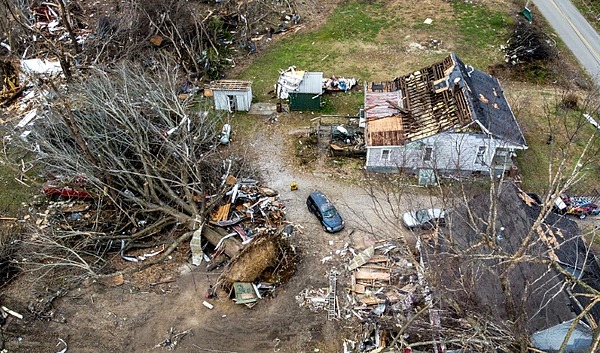
ADVERTISEMENT
ADVERTISEMENT









